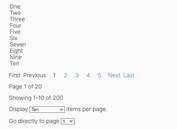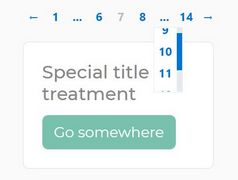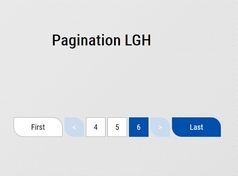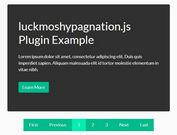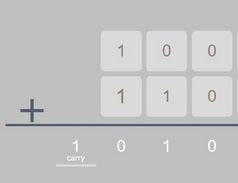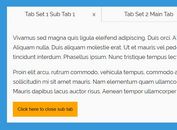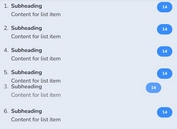Tiny Flexible jQuery Pagination Plugin - MXPage.js
| File Size: | 6.85 KB |
|---|---|
| Views Total: | 1351 |
| Last Update: | |
| Publish Date: | |
| Official Website: | Go to website |
| License: | MIT |

MXPage.js is a really simple jQuery plugin used to generate a customizable and styleable pagination component for your long page content.
How to use it:
1. Create an empty element that will be served as the container for your pagination component.
<div class="container"></div>
2. Place jQuery library and the jQuery MXPage.js script at the end of the html document.
<script src="//code.jquery.com/jquery-1.11.3.min.js"></script> <script src="jquery.mxpage.min.js"></script>
3. Initialize the plugin to generate pagination links inside the container you just created.
$('.container').mxpage();
4. Apply you own CSS styles to the pagination links.
.mxpage-container { display: block; }
.mxpage-container li { display: inline-block; }
.mxpage {
display: inline-block;
min-width: 15px;
padding: 0 5px 0 5px;
height: 24px;
color: #222;
font-size: 12px;
line-height: 24px;
text-align: center;
border-radius: 4px;
background-color: #fff;
border: solid 1px #ddd;
margin-left: 4px;
margin-right: 4px;
transition: .2s all;
text-decoration: none;
}
.mxpage:hover {
background: #dedede;
color: #666;
border: 1px solid #dedede;
}
.mxpage.active, .mxpage.active:hover {
background-color: transparent;
border-color: transparent;
}
5. Config the pagination component.
// maximum page links to display
perPage: 10,
// current page
currentPage: 1,
// maximum pages
maxPage: 1,
// text for prev button
previousText: 'previous',
// text for next button
nextText: 'next',
// text for first page
frontPageText: 'front page',
// text for last page
lastPageText: 'last page',
// onClick callback function
click: function (index, $element) {}
This awesome jQuery plugin is developed by Hermit-beta. For more Advanced Usages, please check the demo page or visit the official website.
